Governor’s Awards for Excellence in the Arts Celebrates Fifty Years
 Hand-colored Saint Joseph triptych from New World Saints, a portfolio designed and printed by Pamela Shirinne Smith and published by the Press of the Palace of the Governors in 1995. The triptych was named one of the most notable small press works of the 1990s by the New York Public Library.
Hand-colored Saint Joseph triptych from New World Saints, a portfolio designed and printed by Pamela Shirinne Smith and published by the Press of the Palace of the Governors in 1995. The triptych was named one of the most notable small press works of the 1990s by the New York Public Library.
By Jennifer Levin
New Mexico Governor Bruce King and First Lady Alice King established the Governor’s Awards for Excellence in the Arts in 1974 to celebrate the significance of the arts to the state’s culture and economy. The first recipients were well-known icons responsible for creating the visual mythos the world associates with the Land of Enchantment. Today, those honorees are bona fide art royalty—painter Georgia O’Keeffe, potter Maria Martinez, architect John Gaw Meem, and photographer Laura Gilpin.
Five decades later, the annual pool of nominees remains outstanding. Every year, the awards honor up to eight artists and major contributors to the arts. Recent recipients include composer Raven Chacon (2023), santero Arthur López (2022), cartoonist Ricardo Caté (2021), potter Roxanne Swentzell (2019), and art critic Lucy Lippard (2018).
“Fifty years is a long time. To have such a deep well of talent, skill, and support for the arts that you can have so many authentically deserving awardees each year never fails to amaze me,” says Michelle Laflamme-Childs, executive director of New Mexico Arts, the state agency that oversees the nomination process with its advisory board, the New Mexico Arts Commission. They send recommendations to the governor, who makes the final selections.
“In theory,” Laflamme-Childs says, “we could receive nomination letters but not find anyone who really merited the distinction. But that’s never happened, which speaks to the incredible richness of arts and culture in our state.”
The seven recipients of the 2024 Governor’s Awards for Excellence in the Arts come from all over New Mexico. For Debra Garcia y Griego, Department of Cultural Affairs Secretary, recognizing artists in every part of the state is vital.
“All of the artists and arts contributors are part of a much longer history in New Mexico of artistic and cultural expression that goes back millennia,” says Garcia y Griego. “This year’s slate of recipients really represents every corner of the state, and artists at every age.”
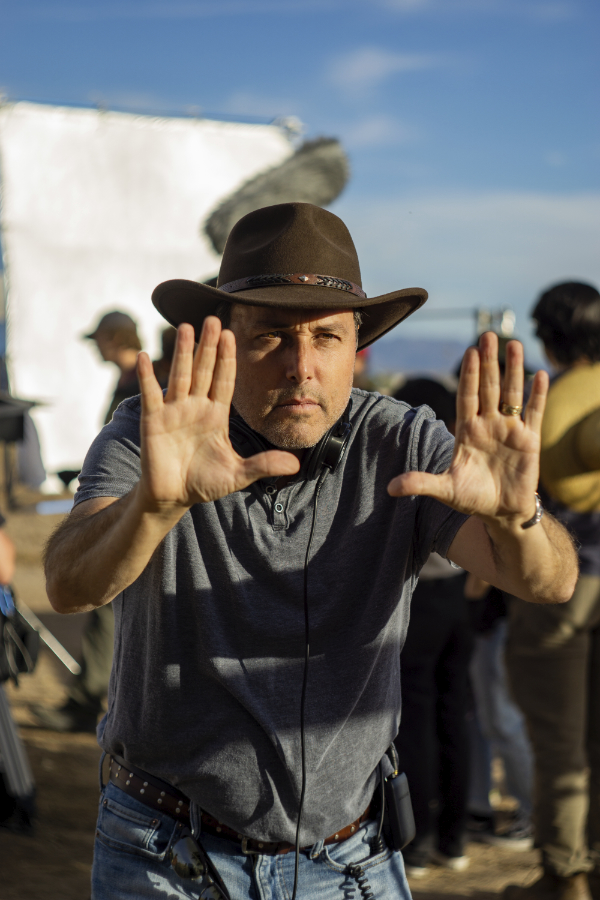
“New Mexico is where I discovered my voice”
Filmmaker Ross Kagan Marks, founder and director of the Las Cruces International Film Festival, is honored this year as a major contributor to the arts. “Whatever I’ve achieved, I owe to New Mexico. New Mexico is where I discovered my voice as an artist,” he says, adding that the Governor’s Award is especially meaningful to him because his mentor and father-in-law, playwright Mark Medoff (Children of a Lesser God), received it in 1980.
“Mark isn’t here to celebrate with me, but it means so much because I’ve worked hard to continue his legacy as an artist and as a teacher. Getting this award is confirmation that I’m doing that.”
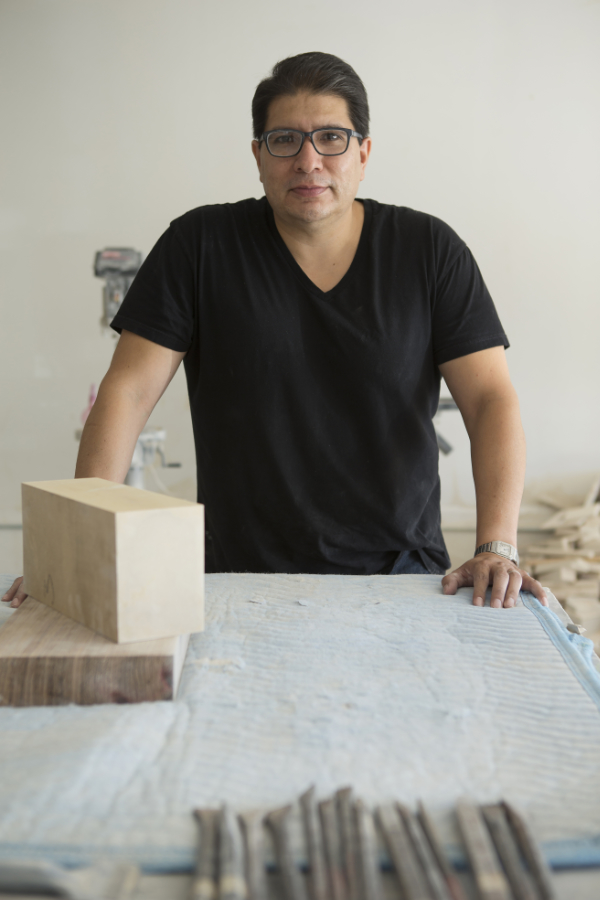
“I want to be an inspiration”
Sculptor Arlo Namingha (Tewa/Hopi) has been gathering accolades for some time. The eldest son of famed painter Dan Namingha received a 2016 Santa Fe Mayor’s Arts Award and was named one of the Santa Fe New Mexican’s “10 Who Made a Difference” in 2023. He works in wood, clay, stone, and fabricated and cast bronze, usually containing Tewa and Hopi cultural images, landscapes, and symbolism. His work is featured in numerous private and museum collections, including two pieces in the Governor’s Mansion. Namingha was among the sixty curators of Grounded in Clay: The Spirit of Pueblo Pottery, an exhibition from the collection of the Indian Arts Research Center at the School for Advanced Research that opened in 2022 at the Museum of Indian Arts and Culture and is now touring nationally.
“I knew of Arlo because of his work at Niman Fine Art, his family’s gallery here in Santa Fe, but I didn’t know about his community activities until I read his many nomination letters,” Laflamme-Childs says. “Not only is he carrying on a long family tradition as an artist, but also because his father received this award in 1985.”
Namingha has long worked as an arts educator and youth mentor, but in 2021, his generosity took a different turn. At his own cost, Namingha created sterling silver stethoscope cuffs and badge charms for the staff in the CHRISTUS St. Vincent COVID-19 wing and presented them in a special ceremony. Two vertical lines represent the Hopi symbol for strength, a design that becomes an equal sign when looked at horizontally. The artist said the imagery honored the medical professionals’ courage in treating patients with dignity and sympathy.

World-famous ballet dancer Jock Soto grew up on the Navajo Nation and now lives in the tiny village of Eagle Nest near the Taos Ski Valley. He began formal dance training at age five, and at eleven, left the southwest for the New York City Ballet, selected for stardom by its legendary artistic director George Balanchine. Soto danced the lead in at least one hundred ballets before retiring at forty. Because communicating the beauty and importance of ballet to children is important to him, he appeared in a dozen episodes of Sesame Street, demonstrating his moves with fellow dancers and with the Muppets. He wrote a memoir, Every Step You Take (Harper, 2011), and he’s the subject of a PBS documentary, Water Flowing Together. In New Mexico, he’s worked with Festival Ballet Albuquerque and Ballet Taos.
“It’s fun to see what the dancers are like in New Mexico. They’re good, and they’re eager. You walk into the studio, and they come to attention,” Soto says. “I want to be an inspiration. I’d never even heard of the Governor’s Arts Awards, but it’s a thrill to be getting one.”
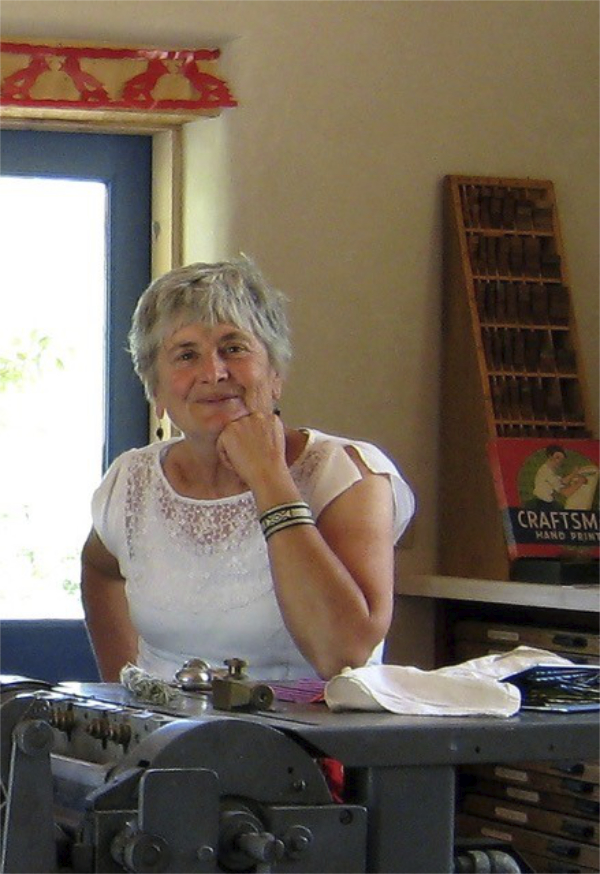
“I’m delighted”
Pamela Shirrine Smith is internationally lauded for the centuries-old craft of paper marbling, a process in which colorful patterns are created on a viscous, liquid surface and transferred to paper. Marbled paper is most often used for covers and endpapers in handmade books, and as proprietor of MarbleSmith Paper, Smith creates edition papers distributed by BookMakers International as well as for private clients.
“You never know what someone is going to do with decorative papers,” Smith says. “Once, I realized someone was using them for wainscotting.”
Smith is included in a 2023 exhibition and catalog at the Metropolitan Museum of Art’s Watson Library, Pattern and Flow, a Golden Age of American Decorated Paper. She teaches master classes and workshops locally and around the world, most recently at Oxbow, the School of the Art Institute of Chicago’s summer residency program. Before her 2001 retirement, the longtime Abiquiu resident spent twenty-eight years as director of the Museum of New Mexico’s Press at the Palace of the Governors. There, she created limited-edition books of New Mexico literature, including Broncho vs. Bicycle, a tale in verse by John Wallace Crawford (also known as Captain Jack)—one of the state’s earliest poet-playwrights.
Like many of the other award recipients, Smith is involved in her community and helped establish the village of Abiquiu’s first public library in 1998. “I put together a collection of nineteenth-century photographs taken in and around the village,” she recalls. “I’m delighted that people here who don’t know me as a paper marbler will now recognize me for this little-known, magical art form.”

A fourth New Mexico artist working to vast acclaim is John Garrett, an experimental fiber artist from Las Cruces. He makes baskets, wall hangings, quilts, and sculptural forms using discarded everyday materials, including painted aluminum, crushed cans, rusted metal, and plastic flowers. The surfaces are rich in texture, with areas of fine detail and complex pattern. An American Craft magazine article disclosed that Garrett wants his pieces to inspire thoughts of abundance, of interior and exterior worlds, and, most of all, of the rewards of looking at things with a fresh eye.
Garrett received National Endowment for the Arts fellowships in 1983 and 1995. In 2010 he was elected a Fellow of the American Craft Council, and in 2013 he received a Lifetime Achievement Award from the National Basketry Organization. His work is included in numerous museum collections, including the Renwick Gallery of the Smithsonian American Art Museum, the Carnegie Museum of Art, the Detroit Institute of Art, and the Albuquerque Museum.
“Someone sees you”
Philanthropists who support major institutions are crucial to New Mexico’s arts and culture. The Department of Cultural Affairs oversees staffing and building maintenance for the New Mexico Museum system, but there isn’t much left over for public programming, so private donations are needed to support exhibitions, educational initiatives, special collections projects, and even new construction. Generous contributors to the arts make it possible for the state’s cultural institutions to thrive despite limited public resources.
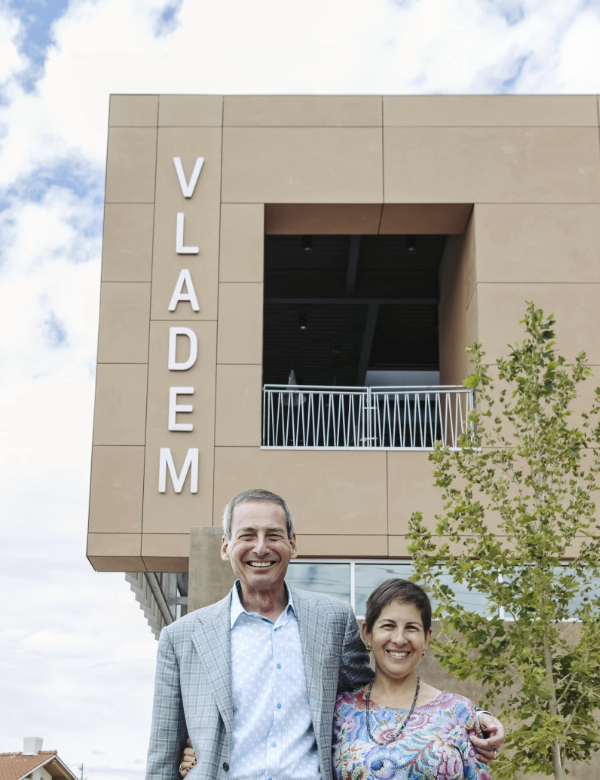
Ellen and Robert Vladem are honored this year for ongoing financial generosity, including a $4 million gift to seed the construction of the Vladem Contemporary, the new wing of the New Mexico Museum of Art that opened in 2023. The Vladems, who have lived in Santa Fe since 2013, have underwritten the Santa Fe Opera since 2015 and established a $5 million endowment to underwrite annual opera seasons in perpetuity. Robert Vladem is a private investor who serves as a trustee of the New Mexico Museum of Natural History and Science, and Ellen Vladem is a retired Intensive Care Unit Registered Nurse. Together, they received the 2022 Santa Fe Mayor’s Arts Award for Philanthropy.
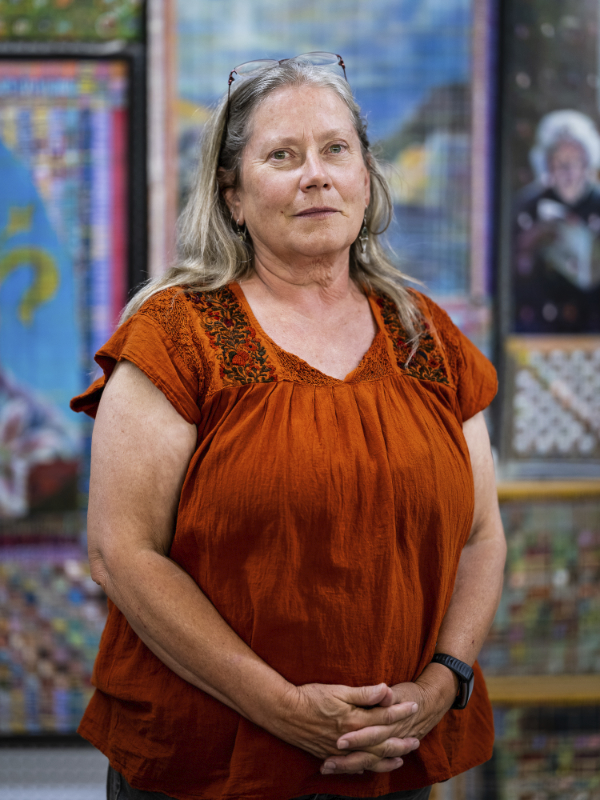
Silver City artist and gallery owner Diana Ingalls Leyba is another major contributor to the arts, nominated for her leadership of the Youth Mural Program, which operates under the auspices of the Grant County Community Foundation. Leyba directs projects “all the way up to Catron County in Glenwood and down to the City of Rocks.” Mural artists range in age from six to eighteen years old. “Everyone communicates their ideas, even with stick figures,” she says. “Designing by committee is a life skill.”
Since its founding in 2002, the Youth Mural Program has completed about eighty-five murals, some within urban landscapes and others in remote areas. A recent project at the Senator Clinton P. Anderson Overlook is celebrating one hundred years since the designation of the Gila Wilderness required participants to travel an hour and a half each way, carrying their own water. Leyba was already impressed with the students’ dedication to creating nature imagery on a low wall at the lookout, but she understood just how much ownership they felt when she saw teens—who aren’t always comfortable talking to adults—excitedly explaining the project to visitors who happened upon them while they were painting.
“I’ve been at it long enough that I have participants who are the kids of kids who were with me when we first started,” Leyba says. “I was at the dog park when I got the call about the award. I started crying. It’s a validation of everything you’re doing—someone sees you.”
Youthful energy is the driving force behind the Las Cruces International Film Festival, now entering its tenth year at New Mexico State University. It’s grown from a handful of films and an audience of about 2,000 to more than 10,000 attendees viewing one hundred films, and it’s the largest student-run film festival in the United States, says director Ross Kagan Marks. The NMSU alumnus returned to teach in 2007 and soon resolved to expand the film industry in southern New Mexico. The festival is worldwide in scope but highlights films made in New Mexico and features a full slate of panels and workshops on all aspects of filmmaking.
“Film festivals are the heart of the industry, and if I can’t take my students to Sundance, I’ll bring Sundance to them,” Marks says. “The festival is a teaching tool, and the students do everything from driving celebrities around town, to projecting the films, to moderating panels. People can feel their energy and enthusiasm.”
For an artist, a Governor’s Award validates a life of creative expression, confirming that your efforts are appreciated not only by individual art lovers but at the highest levels of elected leadership. For those born and raised in New Mexico, this can be especially poignant. For a community organizer or philanthropist, the award is a stamp of approval that conveys credibility and can attract future funding opportunities. All honorees become an indelible part of New Mexico history and, in turn, leave their own legacy.
Secretary Garcia y Griego says fifty years of celebrating artists at the state level is significant, “but it’s not nearly enough. I don’t think you can overstate the importance of the arts to our state or the role of artists and those who support them. New Mexico is blessed with so many cultural resources and so much creative talent that we will never have enough time and enough awards to truly honor everyone who deserves it.”
—
Jennifer Levin is a freelance arts and culture writer and communications specialist in Santa Fe, New Mexico. She is working on a memoir, All the Girls in Their Cages.
